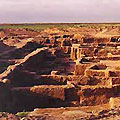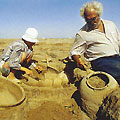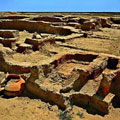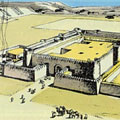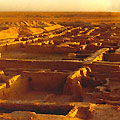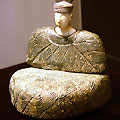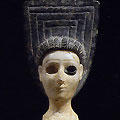Margiana
Margiana… What is the source of this stirring name, which has been entered history textbooks as a symbol of the buried mysteries of time? It is no idle saying that sooner or later every mystery receives an explanation. At the turn of the 20th century A.D., almost four thousand years later, the enigmatic Margiana, which is stuck in descendants' memories only as a result of the angry words of Darius I, carved on a famous Behistun cliff: "The country of Margush became rebellious..", has not only come back from oblivion but found its own true place in the development of human civilization.
Margiana, Margush… Which is more correct? Both of them. Both are names of the same country; derived from the word Murghab - the river whose life giving waters have overshadowed the birth of the country and nation located in the area. Today, Margiana is believed to be among the earliest centers of ancient eastern civilization, whose roots, as researchers surmise, have been influencing the original culture of the Turkmen since ancient times.
The first people to appear in the Murghab delta were settled agriculturalists. They lived in houses built of 45x25x15cm mud bricks baked in the sun. Their settlements were erected between the delta channels in order to irrigate their ploughed fields. As a rule, the bulk of such settlements had no outer fortification walls, so that they could be extended outward in due course. Mud bricks were used to build walls of houses, which were covered on both sides with clayed plaster.
Floors were made of earth and clearly laid with large layers of felt. In living rooms built-in-fire-places were constructed to warm their inhabitants in winter. Adjoining the rooms, there were small additional spaces for cooking and storing food. The houses were separated by small inner courtyards, fenced by high walls. These dwellings were the typical settlements of the ancient Margushians.

